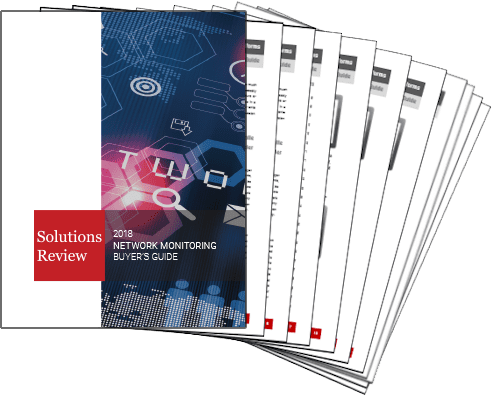10 Network Monitoring Key Features Your Enterprise Solution Should Have


The editors at Solutions Review examine some common network monitoring key features to look for when browsing for an enterprise solution.
In today’s threat landscape, network monitoring plays a vital role in ensuring the security of an enterprise’s network. It allows for detecting unauthorized access attempts, malware infections, or other malicious activities. By analyzing network traffic patterns, monitoring tools can identify suspicious behavior, abnormal communication patterns, or the presence of unauthorized protocols or services. This enables prompt action to mitigate security threats and protect sensitive data and resources. In an enterprise setting, network monitoring also aids in capacity planning and optimization. By monitoring network usage and performance over time, administrators can identify trends, predict future demands, and make informed decisions about network upgrades or expansions. This helps ensure that the network infrastructure can support the increasing needs of the enterprise and avoid potential performance bottlenecks.
It’s worth noting that the specific features and capabilities of a network monitoring solution may vary depending on the vendor and the particular requirements of an enterprise. However, these are some common network monitoring key features to look for when choosing a solution for your team.
Ready to scan some network monitoring solutions? Check out our free Network Monitoring Buyer’s Guide!
10 Network Monitoring Key Features Your Solution Should Have
Here are some key features that such a solution should have to protect an enterprise effectively:
- Real-time monitoring: The solution should provide real-time monitoring of the network infrastructure, continuously collecting data on network traffic, devices, and applications. This allows for immediate detection of any suspicious or abnormal activities.
- Traffic analysis: The solution should be able to analyze network traffic, both at the macro level (overall network traffic patterns) and micro level (individual packets). This helps identify anomalies, such as excessive bandwidth usage, unusual communication patterns, or unauthorized protocols.
- Intrusion detection and prevention: The network monitoring solution should include intrusion detection and prevention capabilities. It should be able to detect and alert potential security breaches, such as intrusion attempts, malware infections, or unauthorized access. Ideally, it should also be able to automatically block or mitigate these threats in real-time.
- Asset discovery and inventory: The solution should be able to automatically discover and maintain a list of all network assets, including servers, workstations, routers, switches, and other devices. This ensures that no unauthorized or rogue devices go unnoticed, and helps track vulnerabilities and patch levels.
- Vulnerability scanning: The network monitoring solution should have vulnerability scanning capabilities to identify weaknesses in the network infrastructure, such as outdated software versions, misconfigurations, or known security vulnerabilities. It should regularly scan the network and provide reports on identified vulnerabilities.
- Log management and analysis: The solution should be able to collect and analyze logs from various network devices and systems, such as firewalls, routers, servers, and applications. By correlating and analyzing log data, it can detect suspicious activities, track user behavior, and identify potential security incidents.
- Alerting and reporting: The network monitoring solution should have a robust alerting system that can notify network administrators about critical events or security incidents in real-time. It should also provide detailed reports and analytics on network performance, security incidents, and compliance adherence.
- Compliance monitoring: The network monitoring solution should have compliance monitoring capabilities for enterprises operating in regulated industries. It should be able to track and report on compliance with industry standards, such as PCI-DSS, HIPAA, or GDPR, and help fulfill audit requirements.
- Scalability and flexibility: The solution should be scalable to accommodate the enterprise’s network size and growth. It should support distributed environments, multiple locations, and diverse network infrastructure. Additionally, it should be flexible enough to integrate with other security tools and systems already in place within the enterprise.
- User-friendly interface: A network monitoring solution should provide an intuitive and user-friendly interface that allows network administrators to configure and manage the system easily. It should provide clear visualizations, dashboards, and customizable reports to facilitate efficient analysis and decision-making.
Overall, a comprehensive network monitoring solution should provide continuous visibility into the enterprise’s network infrastructure, identify and respond to security threats in real-time, and help maintain the organization’s overall security posture. Network monitoring matters in an enterprise setting because it enables proactive network management, enhances security measures, optimizes network performance, supports troubleshooting efforts, and ensures compliance with industry regulations. It provides network administrators with the necessary tools and insights to maintain a reliable and secure network infrastructure, thereby supporting the overall success and efficiency of the enterprise.
This article on network monitoring key features was AI-generated by ChatGPT and edited by Solutions Review editors.




















